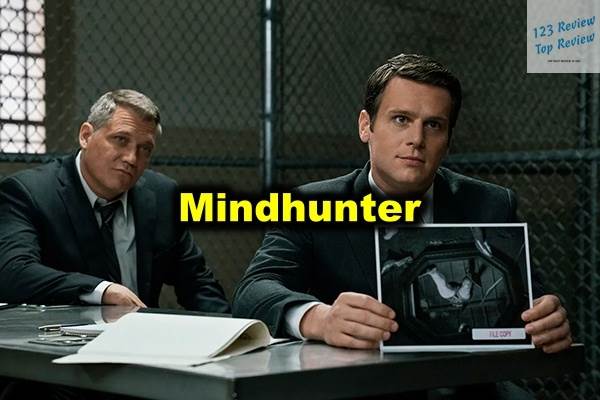“Mindhunter: Inside the F.B.I.’s Behavioral Analysis Unit” is more than just a chronicle of criminal cases; it’s an exploration of the intricate and often harrowing world of criminal profiling. The book, co-authored by John E. Douglas, one of the pioneering figures in the field, offers a comprehensive look at the evolution of criminal profiling from its nascent stages in the 1970s to its pivotal role in modern law enforcement. In this article, 123 Review delves deeply into the book’s themes, case studies, and its broader influence on true crime media and forensic psychology. Moreover, it explores the development of interview techniques used by F.B.I. agents to apprehend some of the most notorious criminals in history and looks ahead to the future of behavioral profiling.
The Development of Criminal Profiling in the 1970s
The Rise of Behavioral Science Units
The 1970s were a time of significant change and innovation in law enforcement, particularly with the emergence of the F.B.I.’s Behavioral Science Unit (BSU). The rise of this specialized unit was driven by a growing need to address the complexities of serial crimes, which often baffled traditional investigative methods. Law enforcement agencies across the United States were grappling with a wave of violent crimes that seemed to defy logic—serial killings, mass murders, and other acts of extreme violence that left communities in fear and police forces at a loss.

The creation of the BSU represented a paradigm shift in the way crimes were investigated. It marked the beginning of a more scientific and psychological approach to understanding criminal behavior. Prior to the establishment of the BSU, most investigations were conducted through a combination of physical evidence collection and witness interviews. However, these methods often proved inadequate when dealing with offenders who meticulously planned their crimes and left little to no evidence behind. The F.B.I. recognized that a deeper understanding of the criminal mind was essential to solving these cases, leading to the establishment of a unit dedicated to studying behavioral patterns and psychological profiles.
The Influence of Psychological Theories on Profiling
Criminal profiling, as it began to take shape in the 1970s, was heavily influenced by existing psychological theories. These theories provided a framework for understanding the complex motivations that drive individuals to commit violent crimes. Early profilers drew on a range of psychological concepts, including Freudian psychoanalysis, which explored the influence of childhood experiences and unconscious desires on behavior. Freudian theory was particularly relevant in understanding the deep-seated impulses that led some individuals to commit acts of extreme violence.
Behaviorism, another influential psychological theory, emphasized the role of learned behaviors in shaping an individual’s actions. Profilers used behaviorist principles to identify patterns of behavior that could predict future criminal activity. For instance, the repetition of certain rituals or the escalation of violent acts over time were seen as learned behaviors that could be traced back to an individual’s past experiences.
Cognitive psychology, which focuses on the mental processes involved in perception, memory, and decision-making, also played a critical role in the development of profiling. Profilers began to analyze how criminals thought and made decisions, particularly in high-stakes situations like planning and executing a crime. By understanding the cognitive processes behind a criminal’s actions, profilers could develop more accurate profiles that predicted not only who the criminal was, but also how they might behave in the future.
Key Figures in the Establishment of Profiling
The establishment of criminal profiling as a vital tool in law enforcement would not have been possible without the contributions of key figures like John E. Douglas and Robert Ressler. These pioneering agents of the F.B.I. were among the first to realize the potential of psychological analysis in solving complex criminal cases. Their work laid the foundation for what would eventually become one of the most important aspects of modern forensic psychology.
John E. Douglas, often referred to as the “father of criminal profiling,” played a central role in the development of profiling techniques. He spent years interviewing convicted serial killers, gathering data on their behaviors, motivations, and methods. Douglas’s approach was methodical and deeply analytical; he sought to understand not just what these criminals did, but why they did it. His interviews revealed common patterns among different killers, which he used to develop a system for predicting future behavior. Douglas’s work was instrumental in transforming profiling from a nascent idea into a legitimate investigative tool.
Robert Ressler, another key figure in the establishment of profiling, is credited with coining the term “serial killer.” Like Douglas, Ressler conducted extensive interviews with convicted killers, including some of the most notorious figures in criminal history. Ressler’s work focused on identifying the psychological and environmental factors that contributed to the development of serial killers. He was particularly interested in the early life experiences of these individuals, believing that childhood trauma, neglect, and abuse were often at the root of their violent behaviors.
Together, Douglas and Ressler helped to establish the F.B.I.’s Behavioral Science Unit as a critical component of modern law enforcement. Their groundbreaking work provided the foundation for the development of criminal profiling as a science, and their influence can still be seen in the way criminal investigations are conducted today.
The Role of Interviews with Serial Killers
One of the most significant aspects of criminal profiling is the use of interviews with convicted serial killers. These interviews provided profilers with a wealth of information that was previously inaccessible. By speaking directly with the individuals who committed these crimes, profilers were able to gain insights into their thought processes, motivations, and methods.
The interviews conducted by John E. Douglas and Robert Ressler were particularly influential in shaping the field of criminal profiling. These sessions were often intense and emotionally draining, as the profilers delved into the darkest corners of the human psyche. The killers they interviewed, including figures like Ed Kemper and Jerry Brudos, provided detailed accounts of their crimes, offering a rare glimpse into the minds of those who commit such acts.
These interviews were not only valuable for the information they provided about specific cases but also for the broader patterns they revealed about serial killers as a whole. Douglas and Ressler found that many of the killers they interviewed shared certain characteristics, such as a history of abuse, feelings of powerlessness, and a need to exert control over their victims. These commonalities helped profilers to develop more accurate profiles that could be used to identify and apprehend future offenders.
In addition to providing insights into the psychology of killers, these interviews also highlighted the importance of understanding the social and environmental factors that contribute to criminal behavior. Profilers began to recognize that serial killers often emerged from environments marked by instability, neglect, and violence. This understanding has informed not only the practice of profiling but also broader efforts to prevent violent crime by addressing its root causes.
Notable Case Studies in Mindhunter
“Mindhunter” offers a deep dive into several notorious case studies, each of which contributed to the development of criminal profiling. These cases highlight the diversity of serial killers, their varying motivations, and the different challenges they presented to law enforcement.
Ted Bundy: The Charismatic Killer
Ted Bundy is perhaps one of the most infamous serial killers in American history, and his case remains a focal point in the study of criminal psychology. Bundy was known for his good looks, charm, and intelligence—traits that he used to manipulate and lure his victims. His ability to blend in with society and appear as a “normal” individual made him especially dangerous, as it allowed him to evade suspicion for an extended period.
Bundy’s case was particularly challenging for profilers because he did not fit the typical image of a serial killer. His outward appearance and demeanor were at odds with the horrific nature of his crimes, which involved the brutal assault and murder of at least 30 young women. This dichotomy between Bundy’s public persona and his private actions forced profilers to reconsider their assumptions about what a serial killer “looks like.”
Profilers studying Bundy’s case focused on his need for control and power, which he exerted over his victims through manipulation and violence. They also noted his tendency to return to crime scenes, a behavior that indicated a deep psychological need to relive his crimes. Bundy’s case underscored the importance of understanding the psychological drivers behind a killer’s actions, rather than relying solely on external characteristics.
Ed Kemper: The Co-Ed Killer
Ed Kemper, also known as the Co-Ed Killer, provided one of the most detailed and revealing accounts of a serial killer’s psyche. Kemper’s crimes were marked by extreme violence and a deep-seated hatred of women, which he traced back to his troubled relationship with his mother. Kemper murdered ten people, including his grandparents, mother, and several young women, before turning himself in to the police.
Kemper was unusually cooperative with law enforcement and willingly provided extensive details about his crimes, making him an invaluable subject for profilers. His intelligence and articulate nature allowed him to offer a level of insight into his motivations that few other killers could match. Kemper’s case highlighted the role of childhood trauma in the development of violent behavior. He spoke openly about the abuse and humiliation he suffered at the hands of his mother, which he believed played a significant role in shaping his violent tendencies.
Profilers studying Kemper’s case noted several key characteristics that would later become common markers in the profiling of other serial killers. These included a history of violence in the home, feelings of powerlessness, and a need to dominate and control others. Kemper’s case also demonstrated the importance of understanding the interplay between an individual’s psychological state and their external environment.
Jerry Brudos: The Lust Killer
Jerry Brudos, known as the Lust Killer, presented a particularly disturbing case study due to the sexually motivated nature of his crimes. Brudos murdered four women between 1968 and 1969, keeping trophies from his victims and engaging in acts of necrophilia. His crimes were driven by deep-seated sexual fetishes and fantasies, which escalated from voyeurism and theft to violent murder.
Brudos’s case highlighted the connection between sexual deviancy and homicidal behavior, a link that would become a critical area of study in criminal profiling. Profilers analyzing Brudos’s actions noted that his crimes were not just about killing; they were also about fulfilling his sexual fantasies. This understanding helped to develop profiles for other sexually motivated killers, who often exhibited similar patterns of behavior.
Brudos’s case also emphasized the importance of early intervention in cases of sexual deviance. Profilers recognized that Brudos’s fetishes, if addressed earlier, might have been managed in a way that prevented his escalation to murder. This insight has informed modern approaches to dealing with sexual offenders, with a greater emphasis on early identification and treatment.
Charles Manson: Cult and Crime
The case of Charles Manson is unique in the history of criminal profiling due to the combination of cult dynamics and charismatic leadership that defined his crimes. Manson, who led the infamous Manson Family, orchestrated a series of brutal murders in 1969, including the killing of actress Sharon Tate. Manson’s ability to manipulate and control his followers, convincing them to commit heinous acts on his behalf, made him a particularly dangerous figure.
Manson’s case challenged profilers to consider the role of group psychology and the power of influence in criminal behavior. Unlike many other serial killers, Manson did not commit the murders himself but used psychological manipulation to compel others to do so. This case underscored the need for profilers to understand the complex dynamics of cults and the psychological tactics used by charismatic leaders to exert control over their followers.
Profilers studying Manson’s case also had to grapple with the ideological motivations behind the crimes. Manson believed in a coming race war and saw the murders as a way to incite chaos and hasten the conflict. This apocalyptic vision, combined with his persuasive abilities, created a unique and dangerous blend of criminality that required a different approach to profiling.
Manson’s case continues to be studied for its insights into the power of influence, the dangers of charismatic leadership, and the ways in which psychological manipulation can be used to commit crimes by proxy. It also highlighted the need for law enforcement to monitor and understand extremist groups and cults, as these can pose significant threats to public safety.
The Impact of Mindhunter on True Crime Media
“Mindhunter” not only revolutionized the way criminal profiling is understood but also had a significant impact on the true crime genre, both in literature and on screen. The book and its subsequent television adaptation brought the world of criminal profiling to a broader audience, influencing public perception and setting a new standard for true crime storytelling.
Reception of the Series Among Critics
The television adaptation of “Mindhunter,” created by Joe Penhall and produced by David Fincher, received widespread critical acclaim upon its release. Critics praised the show for its meticulous attention to detail, its deep psychological insights, and its ability to create tension without resorting to graphic violence. The series was lauded for its character-driven narrative, which focused not only on the killers but also on the F.B.I. agents tasked with studying them.
The show’s realistic portrayal of the development of criminal profiling resonated with audiences and critics alike. Unlike many other crime dramas that sensationalize violence, “Mindhunter” was praised for its more thoughtful and cerebral approach. It delved into the psychological and emotional toll that this work took on the agents, particularly John E. Douglas’s fictional counterpart, Holden Ford. This focus on the human side of profiling helped to distinguish the show from other entries in the genre.
Critics also noted the show’s careful balance between historical accuracy and dramatic storytelling. While “Mindhunter” took some liberties for the sake of narrative cohesion, it remained largely faithful to the real events and figures it depicted. This commitment to authenticity helped to establish the show as a credible source of insight into the world of criminal profiling.
Influence on Public Perception of Profilers
“Mindhunter” significantly shaped the public’s understanding of criminal profiling, portraying it as a complex and intellectually demanding discipline. Prior to the book and series, many people viewed profiling as a sort of mystical art, reliant on intuition and gut feelings. However, “Mindhunter” presented profiling as a science grounded in psychology, data analysis, and a deep understanding of human behavior.
The series showed that profilers are not infallible, highlighting the challenges and uncertainties that come with trying to predict human behavior. This more nuanced portrayal helped to demystify the role of the profiler, making it clear that while profiling can be incredibly useful, it is not a magic bullet for solving crimes. The show also emphasized the importance of collaboration, with profilers working alongside other law enforcement professionals to build comprehensive cases against suspects.
By bringing the work of the F.B.I.’s Behavioral Analysis Unit to a mainstream audience, “Mindhunter” also contributed to a greater appreciation of the psychological aspects of criminal investigations. Viewers began to understand the critical role that psychological analysis plays in solving complex cases, leading to a greater respect for the professionals involved in this work.
The Role of Accuracy vs. Dramatic License in Portrayal
One of the ongoing debates surrounding “Mindhunter” is the balance between accuracy and dramatic license. While the series was praised for its realism, it did take certain liberties to enhance the narrative and maintain viewer engagement. For example, the character of Holden Ford, while based on John E. Douglas, is a fictionalized version of the real-life profiler. This allowed the show’s creators to explore Ford’s psychological journey in a way that may not directly mirror Douglas’s experiences but serves to deepen the narrative and highlight the personal sacrifices involved in such work.
The series also condensed timelines and combined certain events for dramatic effect. While these changes helped to maintain a cohesive and engaging story, they also sparked discussions about the importance of accuracy in true crime portrayals. Critics and fans alike debated the merits of these creative decisions, weighing the value of historical fidelity against the need to craft a compelling drama.
Despite these liberties, “Mindhunter” was widely regarded as one of the more accurate depictions of criminal profiling on screen. The series creators consulted extensively with experts in the field and drew heavily from Douglas’s own accounts to ensure that the core elements of the work were faithfully represented. This commitment to accuracy, even when balanced with the demands of storytelling, helped to cement the show’s reputation as both an entertaining and informative look into the world of criminal profiling.
Comparisons with Other True Crime Shows
“Mindhunter” set a high bar for the true crime genre, prompting comparisons with other popular shows like “Criminal Minds,” “Dexter,” and “The Silence of the Lambs.” While each of these shows has its own unique take on the subject of criminal profiling, “Mindhunter” stood out for its focus on realism and its deep dive into the psychological underpinnings of both the profilers and the criminals they study.
“Criminal Minds,” for example, is often more procedural in nature, with each episode featuring a new case that is solved by the end of the hour. While the show does explore the psychological aspects of profiling, it tends to prioritize action and suspense over the slower, more methodical approach seen in “Mindhunter.” As a result, “Criminal Minds” often simplifies the profiling process, making it appear more straightforward than it is in reality.
“Dexter,” on the other hand, offers a darker, more morally ambiguous take on the concept of profiling, with the protagonist being a serial killer who uses his own insights into criminal behavior to target other killers. While this show delves into the mind of a killer in a way that is both fascinating and disturbing, it is more focused on the internal struggle of its main character than on the broader practice of profiling.
“The Silence of the Lambs” remains a benchmark for psychological thrillers, with its portrayal of the relationship between FBI trainee Clarice Starling and the incarcerated Hannibal Lecter. The film, like “Mindhunter,” delves into the psychological battle between profiler and killer, but its more stylized and suspense-driven approach differs from the slow-burn tension of “Mindhunter.”
In comparison, “Mindhunter” is often praised for its attention to detail and its dedication to portraying the slow, painstaking work of building a psychological profile. By focusing on real-life cases and the early days of criminal profiling, the series provides a historical perspective that is often missing from other shows in the genre. This focus on the origins of profiling and its development over time makes “Mindhunter” a unique and invaluable addition to the true crime canon.
The Evolution of Modern Forensic Psychology
The field of forensic psychology has evolved significantly since the early days of the F.B.I.’s Behavioral Science Unit. Today, criminal profiling is a sophisticated discipline that integrates various psychological theories, advanced technologies, and a deep understanding of human behavior. “Mindhunter” provides a window into the early stages of this evolution, while also highlighting the ongoing developments in the field.
The Integration of Technology in Profiling
One of the most significant changes in modern forensic psychology is the integration of technology into the profiling process. In the early days, profilers relied heavily on interviews, case studies, and their own intuition to build profiles. Today, technology plays a crucial role in analyzing and predicting criminal behavior.
Data analytics and artificial intelligence (AI) are increasingly being used to identify patterns and correlations that might be missed by human analysts. For example, AI can sift through vast amounts of data from different cases to identify commonalities and predict future behavior. This technology has proven especially useful in identifying potential threats before they materialize, allowing law enforcement to intervene early.
Geographical profiling is another area where technology has made a significant impact. By analyzing the locations of a series of crimes, geographical profilers can use algorithms to predict where a serial offender is likely to strike next or even where they might live. This method has proven to be highly effective in narrowing down search areas and focusing investigative resources.
While technology has greatly enhanced the capabilities of modern profilers, it has also introduced new challenges. There is a growing need for professionals who can interpret and apply technological findings in a meaningful way. Additionally, the ethical implications of using AI and data analytics in criminal profiling are still being debated, particularly in relation to privacy concerns and the potential for bias.
Current Trends in Behavioral Analysis
Behavioral analysis continues to evolve as new research sheds light on the complexities of human behavior. One of the current trends in the field is the move towards a more holistic approach to profiling. Modern profilers are increasingly considering a wider range of factors, including cultural, environmental, and socio-economic influences, when building profiles. This approach recognizes that criminal behavior is often the result of a complex interplay of factors, rather than a single psychological issue.
Another trend is the growing emphasis on offender rehabilitation. While traditional profiling has focused on catching criminals, there is now a greater focus on understanding how to prevent re-offense and rehabilitate offenders. This shift reflects a broader change in the criminal justice system, which is increasingly focused on rehabilitation rather than solely on punishment.
The use of behavioral analysis in counterterrorism is also a significant development. Profilers are now applying their skills to understand and predict the behavior of individuals involved in terrorist activities. This work involves analyzing propaganda, recruitment methods, and the psychological profiles of those who are drawn to extremist ideologies. As terrorism continues to evolve, so too does the role of behavioral analysis in combating this global threat.
The Ongoing Impact of Mindhunter on Law Enforcement
The lessons learned from “Mindhunter” and the early days of the Behavioral Science Unit continue to influence modern law enforcement practices. The principles of criminal profiling developed by John E. Douglas and his colleagues have been refined and expanded upon, but the core idea remains the same: understanding the psychology of criminals is key to predicting and preventing their actions.
Law enforcement agencies around the world now routinely use profiling techniques to solve crimes and catch offenders. The success of these methods has led to the establishment of similar units in other countries, as well as the integration of behavioral analysis into various aspects of policing.
Moreover, the popularity of “Mindhunter” has helped to raise public awareness about the importance of psychological analysis in law enforcement. This increased awareness has led to greater support for the use of profiling and other psychological techniques in solving crimes. It has also inspired a new generation of criminologists, psychologists, and law enforcement professionals to pursue careers in this challenging and rewarding field.
Ethical Considerations in Profiling
As with any powerful tool, the use of criminal profiling raises important ethical questions. One of the key concerns is the potential for profiling to lead to bias or discrimination. There is a risk that profiles could be used to unfairly target certain groups of people, particularly if the profiling process is not properly overseen.
Another ethical issue is the balance between public safety and individual rights. Profilers often work with sensitive information, and there is a need to ensure that this information is used responsibly. The potential for misuse is significant, particularly as technology allows for the collection and analysis of more data than ever before.
Finally, there is the question of the psychological impact on those who are profiled. Being labeled as a potential suspect can have serious consequences, even if the individual is ultimately found to be innocent. Profilers must therefore be careful to ensure that their work is as accurate and fair as possible.
The ethical challenges facing criminal profilers are significant, but they are not insurmountable. By adhering to strict ethical guidelines and continuing to develop and refine their methods, profilers can ensure that their work is both effective and just.
The Role of Interview Techniques in Catching Killers
Interviewing suspects and convicted criminals is one of the most critical aspects of criminal profiling. The techniques used in these interviews can often make the difference between solving a case and letting a killer go free. “Mindhunter” provides a detailed look at the interview techniques developed by the F.B.I.’s Behavioral Science Unit, many of which are still used today.
Strategies Used by F.B.I. Agents During Interviews
F.B.I. agents have developed a range of strategies for interviewing suspects and convicted criminals. One of the most important techniques is building rapport with the interviewee. By establishing a connection, agents can encourage suspects to open up and share information that they might otherwise withhold.
Another key strategy is the use of psychological manipulation. This can involve presenting information in a way that plays on the suspect’s fears, insecurities, or desires. For example, an agent might suggest that confessing could lead to a lighter sentence or appeal to the suspect’s need for recognition and validation.
The use of open-ended questions is another crucial technique. Rather than asking yes or no questions, agents encourage suspects to tell their story in their own words. This approach not only helps to gather more information but also allows agents to observe the suspect’s behavior and body language, which can provide additional clues.
Psychological Manipulation and Its Effects
Psychological manipulation is a powerful tool in the arsenal of an F.B.I. profiler, but it must be used carefully. Manipulation can involve a range of tactics, from playing on a suspect’s emotions to presenting false evidence. While these techniques can be highly effective in eliciting confessions, they also carry significant risks.
One of the primary risks of psychological manipulation is the potential for false confessions. If a suspect feels pressured or coerced, they may confess to a crime they did not commit. This is particularly true in cases where the suspect is vulnerable, such as individuals with mental health issues or those who are easily influenced.
To mitigate these risks, agents are trained to use psychological manipulation in a controlled and ethical manner. They must be careful not to cross the line between persuasion and coercion, ensuring that any confessions obtained are genuine and reliable.
The Role of Behavioral Analysis in Interviewing
Behavioral analysis plays a crucial role in the interview process. By understanding the psychology of the suspect, profilers can tailor their approach to maximize the chances of obtaining useful information. This might involve adjusting their tone, language, or body language to better align with the suspect’s personality and emotional state.
For example, a suspect who is highly narcissistic might respond well to flattery and appeals to their ego, while a more fearful individual might require a gentler, more reassuring approach. Profilers must also be adept at reading non-verbal cues, such as changes in body language or facial expressions, which can reveal a great deal about the suspect’s state of mind.
Behavioral analysis also helps profilers to identify when a suspect is lying or withholding information. By comparing the suspect’s statements with known facts and observing inconsistencies in their behavior, agents can often uncover the truth, even in cases where the suspect is trying to deceive them.
Notable Real-Life Interviews
Over the years, the F.B.I.’s Behavioral Science Unit has conducted interviews with some of the most notorious criminals in history. These interviews have provided invaluable insights into the minds of killers and have helped to develop the techniques and strategies used by profilers today.
One of the most famous interviews was conducted with Ed Kemper, the “Co-Ed Killer.” Kemper’s willingness to talk about his crimes in great detail provided the F.B.I. with a wealth of information about the motivations and thought processes of a serial killer. His interviews are still studied today as part of the training for new profilers.
Another significant interview was with David Berkowitz, the “Son of Sam.” Berkowitz’s case was particularly challenging because of the complex psychological issues involved. The insights gained from his interviews helped to shape the F.B.I.’s understanding of how mental illness can influence criminal behavior.
These interviews, and many others like them, have played a critical role in the development of modern criminal profiling. They have provided the foundation for the techniques used by profilers today and have helped to shape the field into what it is now.
Conclusion: The Lasting Legacy of “Mindhunter”
“Mindhunter” has left an indelible mark on both the field of criminal profiling and the true crime genre. By bringing the complex world of forensic psychology to a broader audience, the book and its television adaptation have not only entertained but also educated viewers about the realities of criminal investigation.
The stories of real-life profilers like John E. Douglas, as portrayed in “Mindhunter,” have inspired a deeper understanding of the psychological underpinnings of criminal behavior. They have also highlighted the challenges and ethical dilemmas faced by those who work in this field, from the use of psychological manipulation to the integration of advanced technology in profiling.
As forensic psychology continues to evolve, the lessons learned from “Mindhunter” will remain relevant. The series has set a high standard for accuracy and depth in true crime storytelling, and its impact will likely be felt for years to come. Whether through influencing public perceptions, inspiring new professionals in the field, or shaping the future of criminal profiling, “Mindhunter” has cemented its place as a seminal work in the study of crime and the mind of the criminal.





